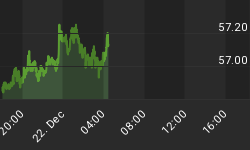On April 2, 2013, Peter Orzag, former director of President Obama's Office of Management and Budget, debated David A. Stockman, former director of President Reagan's Office of Management and Budget. Stockman is the author of The Great Deformation: The Corruption of Capitalism in America, a book that doses out unwelcome prescriptions for mending America. (Also a book that Amazon pledges to deliver within 3 weeks, a testament to the book's resonance with the reading public or publisher short-sightedness, the latter condition being practically redundant.) Orzag, who wanted to bury this uncomfortable debate, told Stockman and the TV audience: "The discussion has to happen within the bounds of what's, from a political economy perspective, remotely feasible. It does no good to be so far off from what's practical in terms of what could actually happen that it's a completely academic exercise."
It is Orzag who both ardently and fearfully attempted to lasso the debate within faculty parameters. Orzag is now a vice chairman of Citigroup. His attempt to live in the past resembled Citicorp Chairman Walter Wriston's (circa 1982) declaration that sovereign nations never default.
Chapter 31 of The Great Deformation ("No Recovery on Main Street") shows how far the United States has wandered from a functioning economy. To those who are perplexed at the state of the union, this chapter is illuminating. What follows is a quick etching of how this trillion-dollar-a-year, deficit-financed economy has departed from sustainable reality despite the protestations of such establishment figures as Peter Orzag.
One strand is the 21st century swing towards HES jobs: health, education, and social services. They do not produce high-paying salaries. Stockman isolates these from "breadwinner" jobs, which, "on average paid about $50,000 per year - just enough to support a family." There were 72 million breadwinner jobs in the American economy in 2000. By September 2012, there were 66.4 million. Such jobs fell by an average of 35,000 each-and-every month over those 12 years.
From the time the recent recession bottomed in December 2007 (not to be mistaken with the long-running ever-worsening Silent Depression), 5.6 million breadwinner jobs have been lost. Only 200,000 had been recovered by September 2012.
Since the official recession ended in June 2009, three million jobs, of all types, have been recovered. More than half of those have been in what is often called the "part-time economy" including "retail, hotel, restaurants, shoe-shine stands, and temporary help agency" positions. The "part-time" shoe-shine boys and dish washers were positions restored after layoffs during the recession.
About 40% of the three million are HES positions. These are new jobs. Daunting is the recognition these positions have been deficit- and debt-fueled. Jarring is the recognition they could vanish if U.S. government spending is constrained.
HES jobs serve the economy. They are made possible by production. The current U.S. economy does not fit this mold. It is an economy boosted by rising debt rather than increased production. Stockman writes that HES job growth "was possible only so long as government and health plans could keep spending at rates far higher than the growth rate of the national economy."
From the turn of the century until 2007 (end of the housing-boom era), nominal GDP grew by $4 trillion. Total debt rose $20 trillion: $5 of new debt for every dollar of growth. More to the point, federal spending on Medicare rose from $300 billion in 2000 to $800 billion by 2012. Stockman writes: "Having gone from a modest surplus (the federal budget was in surplus in 2000 - FJS) to a $1.2 trillion deficit (annual - FJS) during the same 12-year time frame, it was evident the robust growth of federal health spending and the consequent bonanza of new jobs, on the margin, had been deficit financed."
Of education, from 2000 to 2012, student debt rose from $150 billion to $1 trillion. "The job count in nonpublic higher education had risen nearly 45 percent during the same twelve-year time frame..."
The reader may be forming a parallel picture to bulging mortgage credit, a building bonanza, and the associated growth in construction jobs.
Maybe Orzag is right. It's more comfortable not to think about where we, or these jobs, are headed.
Frederick Sheehan writes a blog at www.aucontrarian.com
















